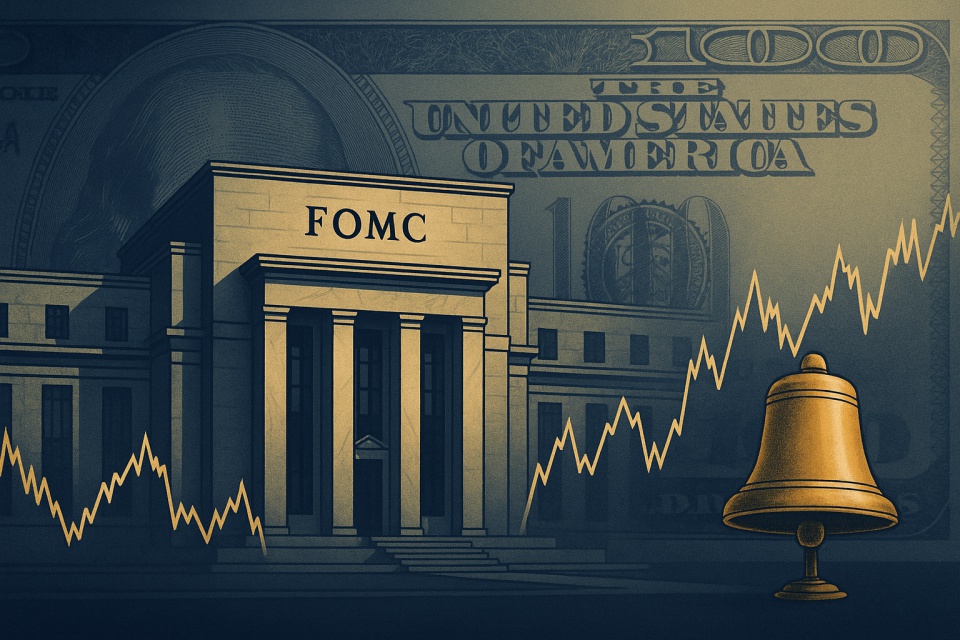Introduction: Why This FOMC Matters Now
The May 2025 FOMC meeting is more than just another rate decision—it could be the catalyst that ends weeks of sideways price action across major markets. With inflation cooling gradually, U.S. labor data remaining resilient, and political pressure mounting from the Trump administration for rate cuts, the Fed is caught in a complex policy bind.
While markets overwhelmingly expect the Fed to hold rates steady, what truly matters this time is the tone of the statement and Powell’s press conference. Will the Fed double down on its inflation-fighting stance, or will it start signaling concern about economic softness?
This report breaks down how the May FOMC may impact key assets—especially USD/JPY, EUR/USD, S&P 500, gold, and U.S. yields—using a combined framework of macro fundamentals, technical analysis, and market sentiment.
Core FOMC Expectations and Policy Context
🔹 Rate Pause is the Baseline—But Not the Whole Story
Markets are pricing in a near-certain rate pause at the May 2025 FOMC meeting. That’s not surprising:
- Headline inflation is decelerating, with the March core PCE flat vs. the expected +0.1%
- April nonfarm payrolls came in strong, with 177,000 jobs added—suggesting no urgency for easing
- Fed officials remain cautious, with policymakers like Barkin and Kugler signaling concern about inflation expectations slipping too far below target
In short, the Fed has little reason to move in May. But that doesn’t mean the meeting is irrelevant. On the contrary, uncertainty surrounding trade policy, inflation stickiness, and political pressure makes this FOMC a potential pivot point.
🔹 Trump’s Pressure and the Tariff Wildcard
President Trump and his advisors have publicly ramped up calls for rate cuts—something Powell and the Fed are resisting. However, new tariffs proposed by the administration could reintroduce cost-push inflation, complicating the Fed’s narrative just as progress was being made.
At the same time, other central banks are already shifting:
- The ECB is likely to cut in June, creating a potential divergence
- The Bank of Canada canceled its usual base case projection, citing policy uncertainty stemming from U.S. trade actions
The takeaway?
The Fed must signal resolve without sounding tone-deaf to emerging downside risks. This balancing act could affect how traders position for Q2 and Q3.
Cross-Asset Implications: USD/JPY, EUR/USD, Stocks, Gold
🔹 USD/JPY: On the Verge of a Trend Shift
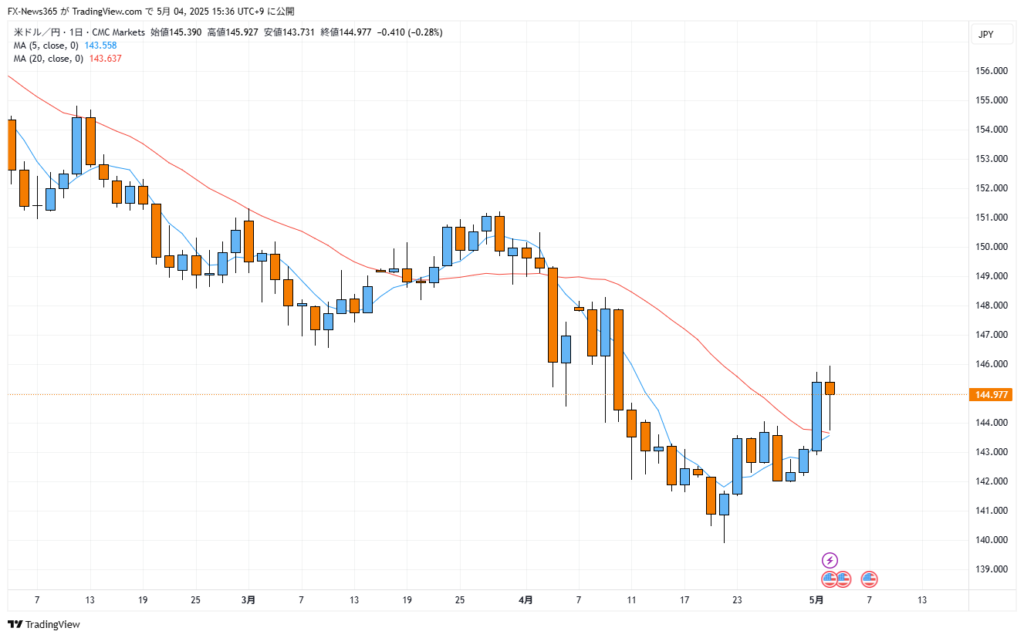
USD/JPY is showing early signs of a trend reversal.
While the daily chart hasn’t confirmed a golden cross, the 8-hour chart already has. The pair is currently testing the 146.00 level, which previously acted as both support and resistance in April.
If the FOMC reinforces a hawkish tone, we could see a breakout above 146.00, confirming a shift back to a bullish structure.
A dovish surprise, however, might pull the pair back toward the 143 zone.
📌 Key Level: 146.00
📌 Short-term Bias: Bullish if 5MA × 20MA golden cross completes
🔹 EUR/USD: Support Under Pressure, Awaiting a Catalyst
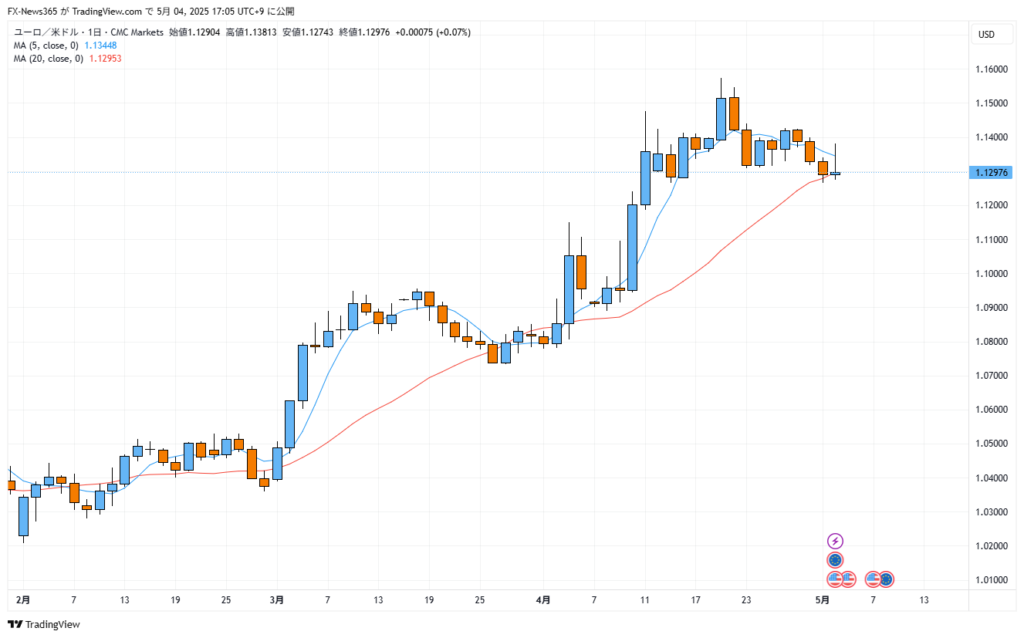
EUR/USD remains in a broad uptrend, but momentum is weakening.
Price is testing both the 1.1280 support and the 20-day moving average. A clean break below this zone could expose the pair to a drop toward 1.1050.
While the ECB is expected to cut rates in June, recent CPI data shows stickier-than-expected core inflation—creating tension with the Fed’s stance.
📌 Scenario:
- Fed hawkishness → Renewed dollar strength → EUR/USD breakdown
- Dovish tilt → Short-lived euro rebound, but upside capped without ECB support
🔹 S&P 500: Facing Resistance at the 200-Day Moving Average
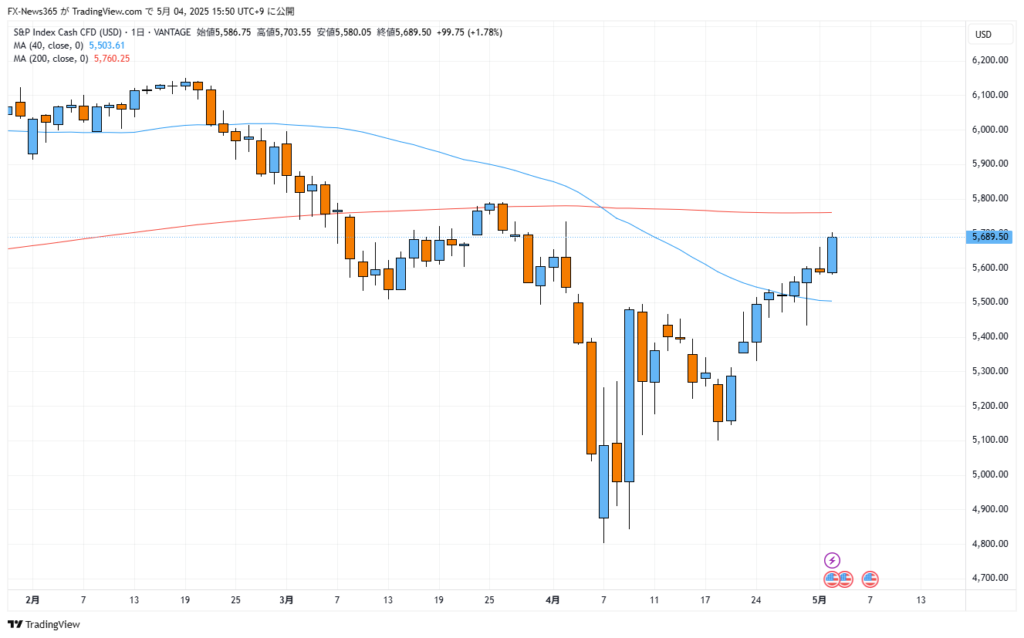
The index has rallied from recent lows but now faces key resistance at its 200-day MA.
Recent price action shows a death cross with the 40-day MA, suggesting vulnerability even before the FOMC.
A hawkish Fed could push yields higher and trigger profit-taking in equities.
A dovish surprise might give risk assets some breathing room—but likely limited.
📌 Bias: Bearish-to-neutral
📌 Watch: Whether the index can break through 200DMA or gets rejected
🔹 Gold (XAU/USD): Weakening Momentum with Gap Signal
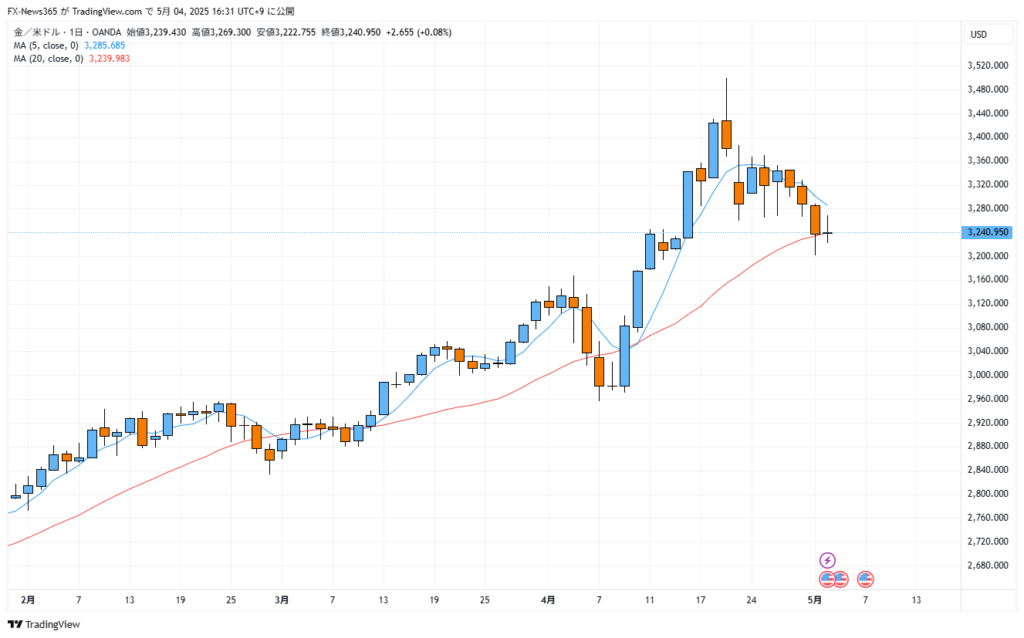
Gold recently pulled back to its 20-day MA and shows loss of bullish momentum.
The April 23rd gap down—nearly $58 from close to open—is a rare event in gold and suggests institutional selling or sentiment shift.
If price breaks below the 20MA, support zones at 3135 and 2980 become viable downside targets.
📌 Key Trigger: 20MA break
📌 Bias: Bearish unless strong rebound emerges post-FOMC
Strategy Post-FOMC: Trade Setups and Risk Factors
🔹 The Market Is Ready—It Just Needs a Trigger
Across assets, we’re seeing technical tension—USD/JPY hovering at resistance, EUR/USD on the verge of a support break, and S&P 500 stalling at its 200DMA.
The FOMC could act as the catalyst to resolve these indecisive structures.
📌 This is not a “fade the news” environment—it’s potentially the beginning of trend resumption or reversal. Traders should prepare accordingly.
🔍 3-Step Trading Framework for FOMC Volatility
| Step | Focus | What It Tells You |
|---|---|---|
| ① Policy Outcome | Hawkish / Dovish? Surprise factor? | Direction of macro bias |
| ② First Reaction | Breakout or fakeout? | Market’s true interpretation |
| ③ Chart Structure | Confirm with MA, support/resistance | Entry/exit timing & invalidation levels |
✅ USD/JPY Setup
- Bullish case: Break and hold above 146.00 → potential toward 148.50
- Bearish case: Dovish tone + rejection at 146.00 → return to 143.00 zone
- Trade idea: Wait for post-FOMC confirmation candle; avoid early entries
✅ EUR/USD Setup
- Bearish case: Break below 1.1280 and 20MA → target 1.1050
- Neutral-bullish: Hold at support with dovish Fed → minor bounce, capped near 1.1400
- Trade idea: Consider layered short entries if momentum confirms break
✅ Gold and S&P 500 Considerations
- Gold: Break below 20MA → short toward 3135
- S&P 500: Rejection at 200DMA + yield spike → sell-off scenario
- Note: Cross-asset confirmation is key—watch how yields react alongside dollar strength or weakness
⚠️ Risk Factors to Watch
- Initial market reaction ≠ final direction
→ Allow 1–2 candles post-FOMC for true trend to emerge - Press conference drift
→ Powell’s tone may contradict the statement; stay agile - Low-liquidity whipsaws
→ Spreads widen; consider using reduced lot sizes
🧭 The Best Strategy? React, Don’t Predict
Rather than betting before the event, position after key chart signals emerge.
This FOMC is more about what the market does with the information than the information itself.
Macro-Sentiment Synthesis: Rate Path, Inflation, and Political Overlay
🔹 Traders Are Torn Between Optimism and Caution
The sentiment heading into the May FOMC is fragile.
While the Fed is expected to hold rates, traders are on edge—not because of the decision itself, but because of what it might signal about the second half of 2025.
Markets are juggling three competing forces:
- Disinflation narrative (core PCE flat in March)
- Political pressure for rate cuts from the Trump administration
- Sticky labor strength and resilient consumer demand
The resulting mood?
“The Fed may be right to hold—but can they stay on hold for long?”
🔹 Sentiment Divergence Across Asset Classes
- USD: Traders lean hawkish, but positioning remains cautious
- Stocks: Bearish divergence between price action and macro outlook
- Gold: Lost some luster amid yield stability; large April gap shook confidence
- Yields: Consolidating in a pennant pattern; markets await direction from Fed tone
This divergence signals one thing:
Markets are desperate for clarity—and Powell’s press conference could provide it.
🔹 The Tariff Trap and Fiscal Politics
Trump’s tariff agenda looms large. If new trade restrictions materialize, they could fuel another wave of cost-push inflation, potentially cornering the Fed in Q3–Q4.
At the same time, the political overlay creates asymmetric risk:
- Hawkish tone → triggers equity and gold sell-off
- Dovish tilt → risks being seen as caving to political pressure
📌 In short, even a “pause” is no longer neutral—it’s charged with interpretive tension.
Final Thoughts: Scenario Readiness and Trader Mindset
🔹 It’s Not About Being Right—It’s About Being Ready
The May 2025 FOMC will likely deliver what the market expects: a rate hold.
But what will truly move markets is not the decision, but the interpretation of Powell’s tone and how that plays against political and global economic crosscurrents.
This is not a time for bold predictions—it’s a time for precision and flexibility.
🧠 Mindset for Post-FOMC Trading
- Don’t overreact to the initial move.
False breakouts are common. Let the market reveal its hand after volatility settles. - Focus on confirmation, not anticipation.
Breakouts past key levels (USD/JPY 146, EUR/USD 1.1280) should be validated with strong volume and structure. - Stay aware of the broader macro shifts.
The Fed’s tone may imply patience, but tariffs, elections, and inflation surprises can all reshape the outlook in weeks—not months.
✅ Scenario Grid for Readiness
| Fed Tone | Asset Reaction Likely | Trading Bias |
|---|---|---|
| Hawkish | USD↑, Gold↓, Stocks↓, Yields↑ | Trend continuation trades |
| Dovish | USD↓, Gold↑, Stocks↑, Yields↓ | Cautious reversals, short-term |
| Mixed/Neutral | Chop, fakeouts, retests of key levels | Wait-and-see, breakout filters |
🔚 Bottom Line
The May FOMC may not deliver fireworks on the surface, but under the hood, it’s a decision point for positioning into summer.
📌 React with clarity, not emotion. Observe first, execute second.
